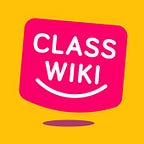Make the Switch; Why Digital Curriculums are the Future
As new as the trend of digital curriculum may seem, the vast majority of students have already experienced digital curriculum by high school. Outside of the educational world, knowledge is gained primarily through technology; it only makes sense that education would catch up to it. There are many reasons to harness the power of digital learning in your classroom, here are just a few.
Digital is Highly Sought After
In the standard role, curriculum creators send teachers the lesson plans, who then simply implement the lesson in the classroom in the form of a lecture or other teacher based activities. IT professionals are only called in when there is a problem. This model is on its way out.
In the digital classroom, each role is intricately linked, and all must work together to properly equip the classroom for success. IT professionals report that this is happening; students and teachers alike prefer to use modern technologies in the classroom. Over 75 percent of educators want new technology implemented; and often call on their tech guys to do it. To make the switch happen as seamlessly as possible; educators, IT professionals, and curriculum creators work together to create a comprehensive approach to learning.
Learning-centered Education
In lecture-centric education, the teacher is the sole distributer of knowledge; dispersing lessons to students often in as little as an hour. This model does not allow for much collaboration, nor does it promote true learning; rather only challenges students to retain information long enough to be tested on it.
Beginning with the millennial generation, today’s students learn in very different ways. Students today value open communication, personalized learning, and community learning more than ever. Keep in mind these students are digital natives, and are accustomed to completing internet searches before they can write in cursive — there is not much out of their reach. To truly learn; their classroom should mirror their outside world; an information-rich world which harnesses different media channels and knowledge sources, valuing collaboration to deliver knowledge.
“Digital media enables us to build more stages for our kids to express themselves.” — Marco Torres
Student-Controlled Education
In the digital model, students are allowed to truly learn; not simply store information for a test. With this comes the idea of individualized learning. Every student will take something different from a subject and make it their own. This is one of the largest benefits of digitizing curriculum; students are more involved in their own learning, and having the curriculum at hand encourages students to learn at their own pace.
Engaging a Community of Peers
Digital curriculum also makes it easier for students to collaborate. In combination with an online class board or open wiki, digital curriculum allows students to speak up and ask for clarification; engaging both teachers and other students in the subject. Students are much more likely to engage over a digital channel, as there is less perceived attention when asking for help. This leads to not only a better comprehension for all students involved, but also promotes social skills, friendship, and teamwork.
In reality, the question is not “When will digital curriculum arrive?” It is already here. The question is truly “How can I take the quickest step towards its implementation?” To that extent, collaborative programs such as class.wiki have made the digital classroom as seamless as possible.
Birdie C deQuay | founder Class.wiki
